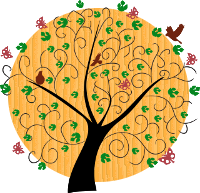Sand scorpionfly
“Just a giant gnat you say. Let me tell you something my friend, this is not just a gnat. It was not that long ago, that we stumbled across the lifeless body of a giant sand scorpion. It was huge, pincers as long as my forearms, but its once fearsome form now lay twisted and still, curled up and riddled with tiny holes.The presence of a Sand Scorpionfly is hard to miss. Its slender, elongated body, nearly the length of an adults finger, is cloaked in fine, brown-colored scales that blend seamlessly with the desert rocks. Its wings, adorned with black and yellow patterns, seem to show the dark, black eyes of a watchful guardian as it flits through the air. When in flight, it produces a droning, deep hum, a sound that cuts trough the desert's silence like a knife. Yet, for all this, the most striking feature of this creature is its tail, covered in curved black thorns and hiding a sharp, dagger-like stinger. This pointed stinger, usually just a weapon of last resort, can deliver pain as excruciating as a true scorpions tail. However, to the scorpionfly , this defense comes at a great cost, for its sting marks the end of its life.
It was not felled by kopesh or hammer, no.. it was that gnat you dismissed so casually. Its brood was long gone, leaving behind only the hollowed shell of their former host. Now, boy, let this be a reminder that in these lands, even the mightiest of us can fall prey to the smallest of creatures."Deamon Ga'rey, Desertwalker
Behavior
Despite its fearsome appearance, the Sand Scorpionfly is not an aggressive creature unless provoked. It spends its days flitting between the sparse vegetation and rocky outcrops of the desert, sipping nectar and preying on smaller insects. As unremarkable as this is, it is the Sand Scorpionfly’s reproductive habits that truly set it apart.In a macabre dance of life and death, it lays its eggs within the bodies of Great Desert Scorpions. With a final, fatal sting, it pierces the scorpion’s armor, sacrificing its own life to ensure the survival of its brood. The larvae, once hatched, begin a grim and cruel feast that lasts for days, devouring the scorpion from within. Eventually, they emerge from the shell of their former host as fully formed scorpionflies, beginning the cycle of life and death anew. It is to be said that many an adventurer, lured by the sight of a seemingly wounded scorpion, has found themselves face to face with a dozen juvenile scorpionflies - a painful, but rarely fatal lesson.
Habitat
The Sand Scorpionfly makes its home in the great deserts of Aran'sha, where temperatures can soar to blistering heights during the day and plummet during the night. It thrives there, amongst the shifting sands and rocky crevices, where it can find both food in other insects and shelter in the shadows. Spotting one or more scorpionflies usually is a sure signs there is a scorpion den nearby.Importance to the People
Legends of the kaharan people speak of the Sand Scorpionfly as a guardian of the desert, a mystical being that sees beyond the veils of reality with its wing's eyes. In ancient folk tales, the Sand Scorpionfly is often depicted as a creature of duality - both a harbinger of life and a messenger of death. Its wings, adorned with eyes as black as the abyss see beyond the veils of reality and its ability to lay eggs within the bodies of the great desert scorpion is seen as a sign of the delicate balance of life and death. On a more mundane level, scorpionflies are a sure sign of giant desert scorpions nearby. Those are often being hunted by brave hunters wo aim to provide ingredients to the alchemists guild. The remains of scorpionflies are also collected, their bodies a potent ingredient in both potions of seeing and concealment. The wings, with their intricate patterns, are often encased in amulets and talismans, believed to protect the wearer against mystical threats.A voluntary test of resilience and courage, young kahran warriors often choose to receive the venomous sting of the Sand Scorpionfly voluntarily.
Placed carefully on each upper arm, the challenger is to endure the two stings in stoic silence. This incredibly painful, but rarely deadly experience leaves a characteristic round mark that is seen as a mark of great honor and resilience









These are some scaaaary bugs o.o
Especially as a scorpion.